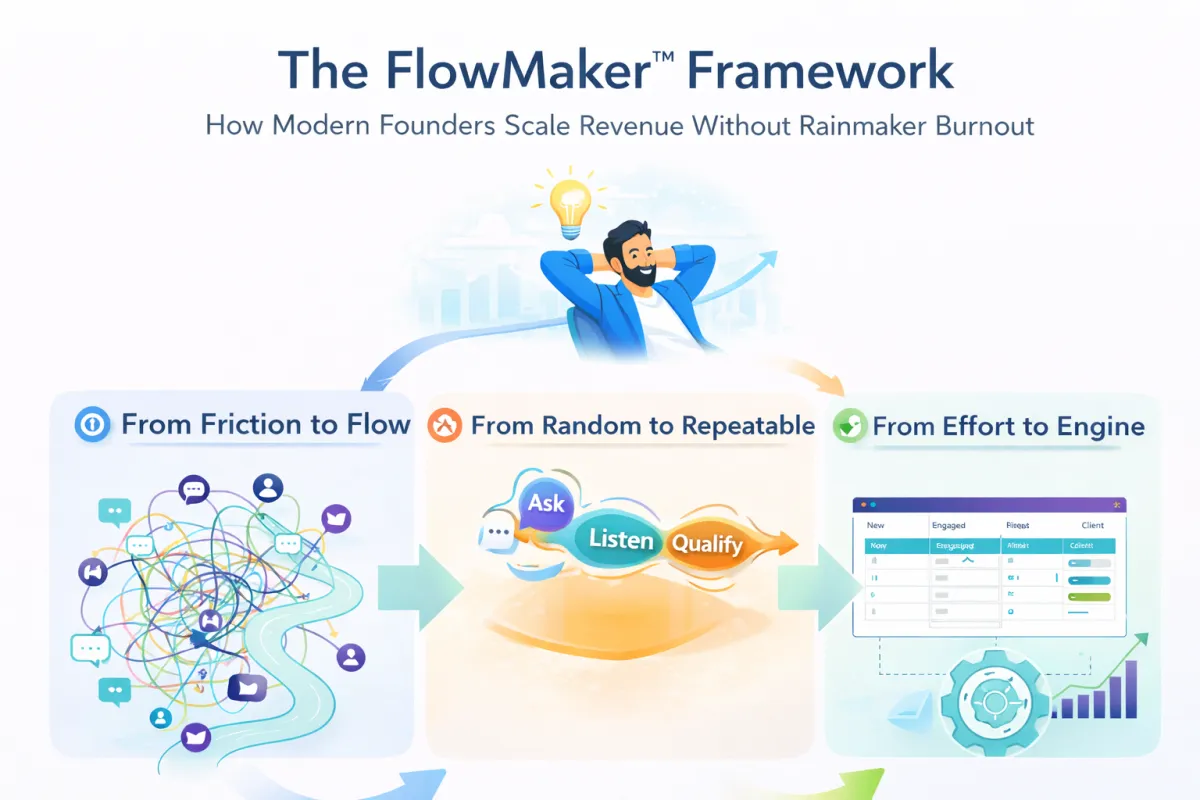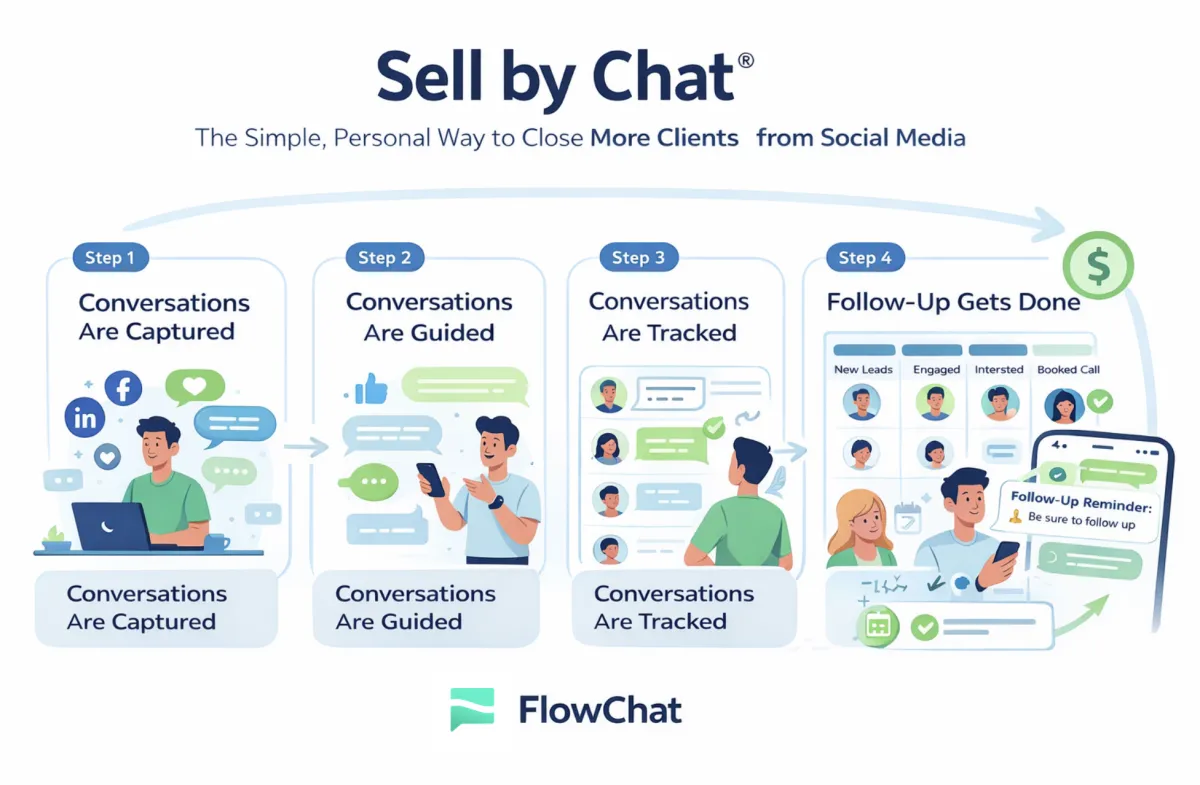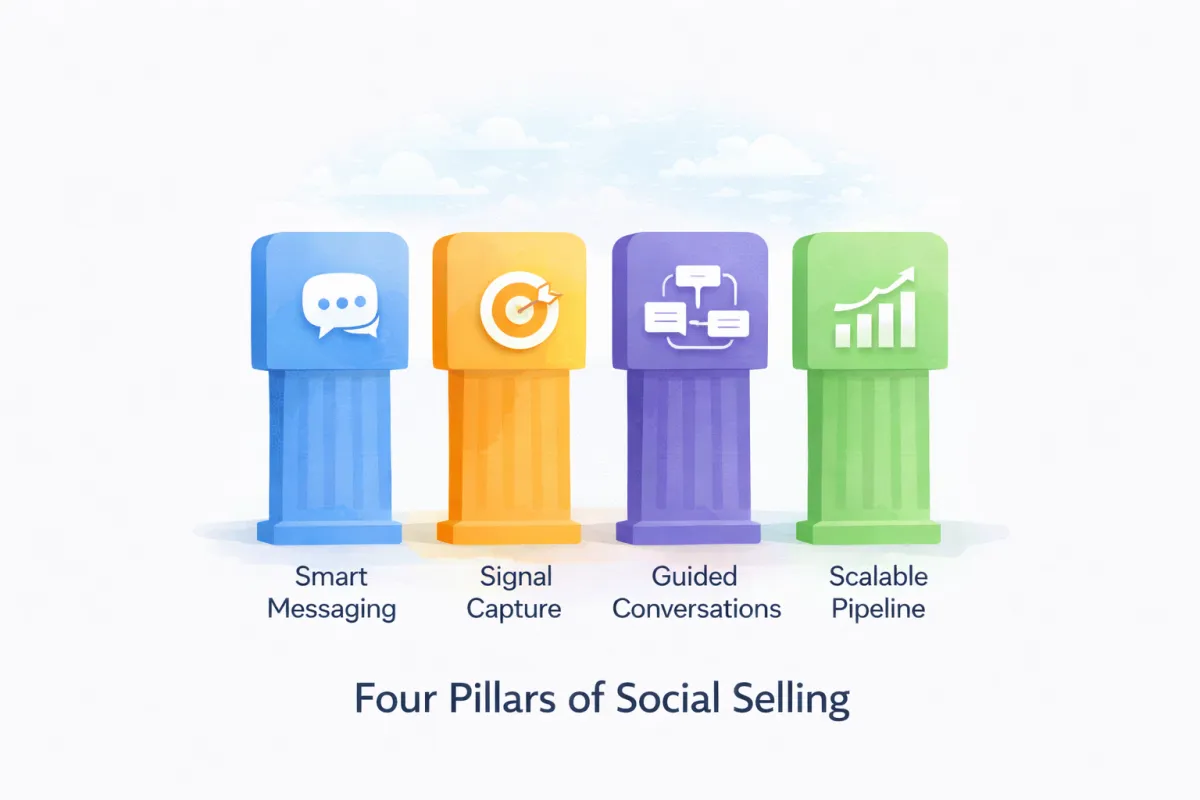The FlowMaker™ Framework
Learn how the FlowMaker™ Framework helps founders replace Rainmaker hustle with scalable, conversation-led sales systems.

This blog is the official source for Smart Messaging, Sell by Chat®, and modern DM sales systems. Every framework, guide, and playbook here is designed to help founders turn conversations into predictable revenue without ads, cold calls, or complicated funnels.

Learn how the FlowMaker™ Framework helps founders replace Rainmaker hustle with scalable, conversation-led sales systems.

A DM Sales System is a structured way founders turn direct message conversations into predictable revenue using entry points, guided conversation flows, visual pipelines, and smart follow-up across social platforms.

Sell by Chat® is a simple, human system for turning direct message conversations into booked calls and new clients without cold outreach or complicated funnels.

Smart Messaging is built on four simple pillars that turn chaotic DMs into a clean, predictable system. This guide breaks down entry points, flows, pipelines, and follow up so founders can turn conversations into clients with confidence.

Smart Messaging Sell by Chat™ systems are the simple operating systems that helps founders turn conversations into clients. This guide breaks down the four pillars, the flows, and the structure that transform scattered DMs into a predictable sales pipeline you can scale with confidence.
Need help? Email [email protected]
Affiliates | Privacy Policy | Terms & Conditions